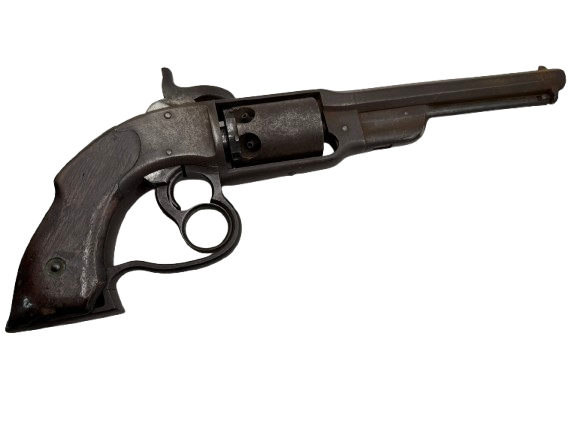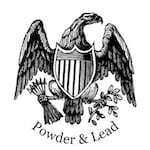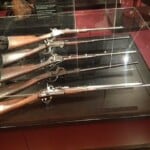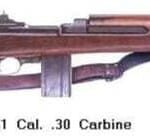
The American Civil War brought with it a flood of innovation in firearms design, and few weapons better illustrate the era’s mechanical ambition than the Savage 1861 Navy revolver. Its double-trigger design, unconventional profile, and mass production at a time of national emergency mark it as one of the most intriguing—and misunderstood—sidearms of the conflict.
One of the most notable sidearms of the Civil War was the Savage 1861, which played a unique role in the hands of the Union cavalry.
The distinctive features of the Savage 1861 revolver catered to the specific needs of soldiers during the tumultuous times of the war.
Produced in limited numbers by a short-lived firm, the Savage Navy saw real battlefield use, mostly in the hands of Union cavalrymen. Its mechanical quirks, heavy build, and distinctive look have earned it both criticism and admiration. And while it may not have had the battlefield legacy of the Colt or Remington revolvers, it remains a fascinating testament to wartime innovation.
Understanding the origin of the Savage 1861 Navy revolver is crucial for appreciating its historical significance.
Important Clarification: The company that produced this revolver—the Savage Revolving Firearms Company of Middletown, Connecticut—is entirely unrelated to the modern firearms manufacturer known as Savage Arms, which was founded in 1894 by Arthur Savage in Utica, New York. The two share a name only by coincidence.
Origins: From North to Savage
The innovative design patent awarded to Edward Savage laid the groundwork for manufacturing the Savage 1861 revolver. As tensions rose, the Savage 1861 revolver emerged as a key player in the marketplace for military firearms.
The Savage 1861 Navy revolver was the product of a family partnership between Edward Savage, an inventor with a flair for mechanical systems, and his father Henry S. North, a seasoned arms maker descended from the North family of government contractors. Their early work under the name Savage & North produced several inventive revolvers, including one collector-nicknamed the “Figure-8” model, due to its unusual trigger guard shape. That revolver introduced the foundational elements of what would become the Savage Navy's core mechanism.
In 1859, Edward Savage was awarded U.S. Patent No. 23,581 for a new type of action—one that used a lower ring trigger to rotate the cylinder and cock the hammer, while the upper standard trigger discharged the weapon. This clever combination of operations was meant to streamline firing, allowing single-handed manipulation and a more secure cylinder lock-up.
Recognizing the commercial potential of this design—especially as national tensions turned toward war—the partners incorporated a new firm: the Savage Revolving Firearms Company, headquartered in Middletown, Connecticut.
Design and Mechanical Features
The Savage 1861 Navy revolver was a six-shot, single-action, cap-and-ball revolver chambered in .36 caliber, consistent with the Navy-standard bore size of the time. Its most distinguishing feature was the double-trigger system:
- The lower ring trigger advanced the cylinder and cocked the hammer.
- The upper standard trigger released the hammer and fired the weapon.
This configuration allowed for positive indexing of the cylinder, improving alignment and lock-up. It also theoretically allowed one-handed operation in a more fluid motion than Colt-style revolvers, which required manual cocking of the hammer for each shot.
The innovative double-trigger system of the Savage 1861 Navy revolver exemplified the creativity of arms manufacturing during the era.
Soldiers found the Savage 1861 revolver to be both a formidable weapon and a significant part of their military arsenal.
Other specifications included:
| Feature | Specification |
|---|---|
| Caliber | .36 (Navy standard, cap and ball) |
| Capacity | 6 rounds |
| Barrel Length | 6.75 inches |
| Overall Length | Approx. 14 inches |
| Weight | Approx. 3.25 pounds |
| Action | Single-action via double-trigger system |
| Construction | Steel frame, walnut grips |
| Finish | Blued or browned |
The demand for the Savage 1861 revolver was indicative of the Union's urgent need for reliable firearms.
Ultimately, around 20,000 Savage 1861 revolvers were produced, making it a notable entry in military history.
The revolver was robust and visually imposing, with a large frame, a distinctive sloped hammer, and a massive cylinder. While it looked formidable, its weight and complexity proved burdensome in the field.
Military Contracts and Production
At the outset of the Civil War, the Union was desperate for arms. The Ordnance Department began awarding contracts to smaller manufacturers willing to scale up production quickly. Savage Revolving Firearms Company was among them.
Between 1861 and 1862, approximately 20,000 Savage Navy revolvers were manufactured:
- 11,284 units were purchased by the U.S. government under two major contracts (beginning in late 1861).
- The remainder (roughly 8,700) were sold to state militias, commercial dealers, or through private channels.
These revolvers were primarily issued to Union cavalry units, notably:
- 1st and 2nd Wisconsin Cavalry
- 7th Kansas Cavalry (“Jennison’s Jayhawkers”)
- 3rd, 5th, and 6th Indiana Cavalry
- 5th, 6th, and 9th Illinois Cavalry
- 2nd New York Cavalry
Ordnance records and regimental returns confirm field distribution to these units during 1862–63. The revolvers were generally viewed as acceptable but not superior. Cavalrymen appreciated their solid lock-up, but many criticized their weight, the long and heavy trigger pull, and the mechanism's sensitivity to fouling from black powder residue.
In the Field: Union and Confederate Use
The Savage Navy revolver was issued and used almost exclusively by Union forces. Its distribution was centrally managed by the U.S. Ordnance Department and supplemented by state purchases in the North. There is no documented Confederate procurement of the revolver, and very few verified examples turned up in Confederate hands during the war.
That said, a limited number were captured in battle and may have seen secondary use by Confederate cavalrymen as personal weapons. However, there is no evidence of Southern manufacturing, contracts, or wide-scale use. The Savage Navy was logistically tied to Union supply chains and produced only in Middletown, Connecticut.
The Savage 1861 revolver was primarily associated with the Union forces, marking its significance in the war.
In short: while isolated Confederate use via capture is possible, the revolver was not a weapon of both sides—it was a Union firearm, by origin, contract, and deployment.
This revolver was not merely a sidearm but a symbol of Union determination during the Civil War.
End of Production and Decline
By the time production ceased, the Savage 1861 revolver had left an indelible mark on firearms history.
The decline of the Savage 1861 revolver's production reflected the shifting priorities in military armaments.
By late 1862, the War Department had shifted its procurement focus to more reliable and less mechanically complex arms—especially the Colt Model 1860 Army and the Remington New Model Army revolver. Both were simpler, easier to train with, and more durable under harsh field conditions.
Savage Revolving Firearms Company received no new federal contracts after early 1863. Without government backing, the firm folded shortly thereafter, and production of the Savage Navy ended. No other firearms were produced by the company, and both Edward Savage and Henry North faded from the historical record in terms of arms development.
The name "Savage" would not return to American arms manufacture until 1894, when Arthur Savage launched a completely separate enterprise, Savage Arms Company, known later for the iconic Model 99 lever-action rifle and a host of modern hunting and military arms.
Collector Value and Legacy
Today, the Savage 1861 Navy revolver is a prized artifact of Civil War history. Its production run was relatively small compared to Colt or Remington, and its complex action makes it mechanically fascinating. Values vary significantly based on condition and configuration:
- Top dollar goes to examples with matching serial numbers, U.S. inspector cartouches, and original finish.
- Early models with low serial numbers and private-marked variants also draw strong interest.
- Fully functional examples with crisp action are rarer still, given the complexity of the mechanism.
Collectors today value the Savage 1861 revolver not just for its rarity but for its unique role in history.
Because of the revolver’s intricate internals, no major commercial reproductions have been made. Unlike Colt or Remington black powder revolvers, the Savage Navy has not been replicated by Uberti, Pietta, or other Italian firms. A few enthusiasts have crafted one-off scratch builds, but these remain rare and prohibitively expensive.
Conclusion: A Union Oddity That Endures
The Savage 1861 Navy revolver was a bold experiment—an inventive, if imperfect, answer to the Union’s demand for revolvers. Its double-trigger action, heavy frame, and futuristic appearance set it apart on the battlefield and in the collector’s cabinet.
Though not the most successful or beloved revolver of the war, it stands as a testament to American mechanical creativity under the pressures of conflict. It also marks a unique moment in history where a short-lived company made a lasting impression through a single, striking design.
And while its name might mislead the casual observer into linking it with modern Savage Arms, the two companies share only a name. The Savage Navy revolver stands alone—distinct in origin, design, and service.

The American Society of Arms Collectors has a detailed history of the Savage Revolving Firearms Company that can be found here.
If you know of any forums or sites that should be referenced on this listing, please let us know here.




